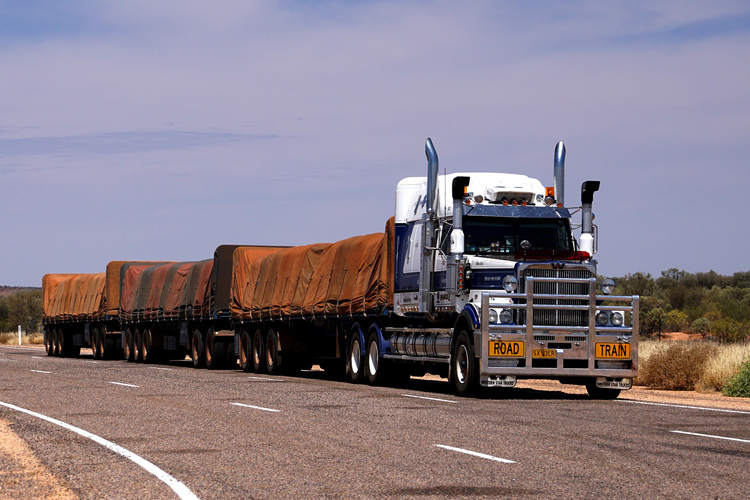Since the end of the pandemic, demand for cargo transportation has gradually begun to decline and threatens to return to its previous level. If this happens, the industry will feel some pretty serious problems.
HMD Trucking is a large, stable transportation company with more than 20 years of history and a fleet of more than 300 trucks. The possible effects of a drop in demand are unlikely to have a significant effect on its business. The same cannot be said for smaller companies, especially those that have entered the market in the last few years.
The total number of trucks involved in trucking in the U.S. has increased by about 10% since the pandemic began. Since trucking rates depend on the balance of supply and demand, a drop in trucking volumes will cause them to collapse as well.
Also of note is the strong increase in carriers’ operating costs, which are up $0.38 per mile from pre-COVID levels. And this calculation includes only maintenance, insurance and fuel costs, but does not include drivers’ salaries and equipment purchase costs.
Fuel prices
Fuel is the largest cost item in transportation companies’ operating expenses. In 2019, the price of diesel fuel ranged from $2.97 to $3.11 per gallon.
So the fuel cost per mile driven was between $0.42 and $0.44 with an average truck consumption of 1 gallon per 7 miles.
In 2022, we have a diesel price of $5.10 per gallon. At the same average consumption, it will be $0.73 per mile.
The average truck will drive about 6,500 miles in a month. Because of the increased price of diesel fuel, the cost per truck per month has increased by about $1950.
Maintenance and insurance costs
In 2019, insurance costs per mile were $0.07. In 2022, they have increased by $0.02 to $0.09 per mile. The same is true for maintenance, which rose from $0.20 to $0.26 per mile over the same period.
When we add up the expense items mentioned above, we find an increase in operating costs of $0.38 per mile for each trucking company. Not the most encouraging numbers, are they?
Equipment purchase
Today is the largest quantity of companies in the trucking market in history. New players enter it at a time of shortage of trucks and are forced to buy used vehicles at inflated prices.
In 2019, for example, you could buy a 3-year-old used truck for $69,000. By 2022, the price of a similar vehicle had almost doubled to $136,000. This is the fastest rate of growth in equipment prices the industry has ever seen.
Suppose that the truck was purchased over a 5 year finance schedule with a 5% rate, the tax on its purchase was 7%. Also assume that this truck will be driven 6,500 miles each month.
For a truck purchased in 2019 for $69,000, the payment per month would be $1,393. At 6,500 miles per month, the trucking company must generate cash flow of $0.21 per mile just to cover the equipment purchase.
For the same vehicle purchased in 2022 for $136,000, the payment per month would be $2,746 or $0.42 per mile, respectively.
Thus, a transportation company that enters the market relatively recently and buys a used truck in 2022 will have to earn $0.59 more per mile than if it had started in 2019.
If you add in the salary of a hired driver, a new company entering the market in 2022 will have operating costs $0.72 per mile more than the same fleet in 2019. This can only mean one thing: It will be extremely difficult for it to survive in the face of falling spot rates.
We don’t know the exact number of used trucks purchased at the top of the market, but we have seen many fleets grow significantly over the past few quarters. Consequently, they will face this problem.

Quick change of spot rates
The current trucking spot rate for freight vans is $3.29 per mile, and its record high was $3.83 per mile in January 2022. The current decrease of $0.54 per mile is very significant, but in a historical context, trucking spot rates are still more than $1.00 per mile higher.
The last trucking crisis was in 2019 and then trucking spot rates ranged from $1.91 to $2.54 per mile. These are the extremes; the average during this year was about $2.00 per mile.
But that’s where the difficulty comes in.The spot trucking rate is only one side of the story. It doesn’t tell us how profitable the trucking industry is.
Is there a new bloodbath waiting for us?
2019 was remembered for the highest number of fleet bankruptcies in history. If trucking spot rates continue to fall, there is a chance that the situation will repeat itself.
The strong decline in spot rates, combined with a significant increase in operating costs, could result in the collapse of many fleets.
The minimal trucking spot rate for 2019 was $1.91 per mile. It seems that this time the carriers will try to survive with a similar baseline. Since fuel is included in the spot rate, the calculation should be adjusted.
A fuel price increase of $0.30 per mile means that the adjusted bloodbath spot rate for 2019 will be about $2.21 per mile. The spot rate below this level will be extremely hard on many small fleets and could lead to bankruptcy.
New trucking companies will be at a much greater disadvantage than previously existing ones
If a fleet just entered the market and bought a truck in 2022, it has the worst terms among other carriers. If the truck is driven by a hired driver, spot rates below $2.63 per mile will lead it to disaster if it persists for long.
The situation can change quickly. If the price of diesel rises, the break-even point for carriers will also rise. If the fuel drops, the breakeven point will be lower. One should pay attention to diesel fuel price directions. The profitability of small carriers largely depends on them.




